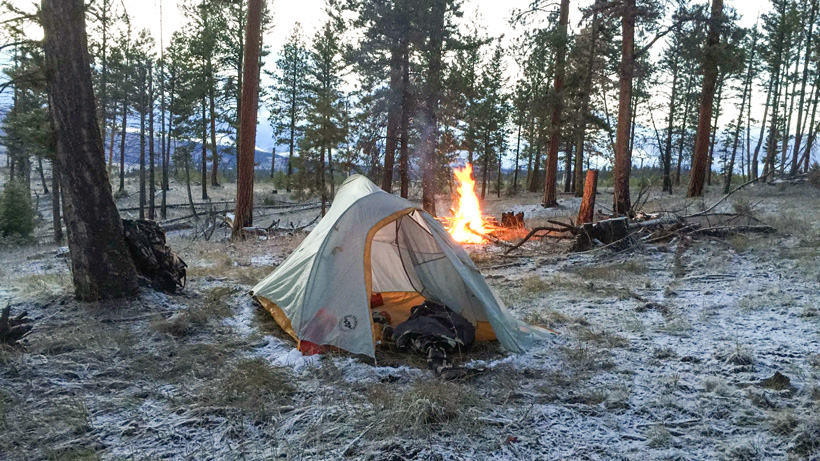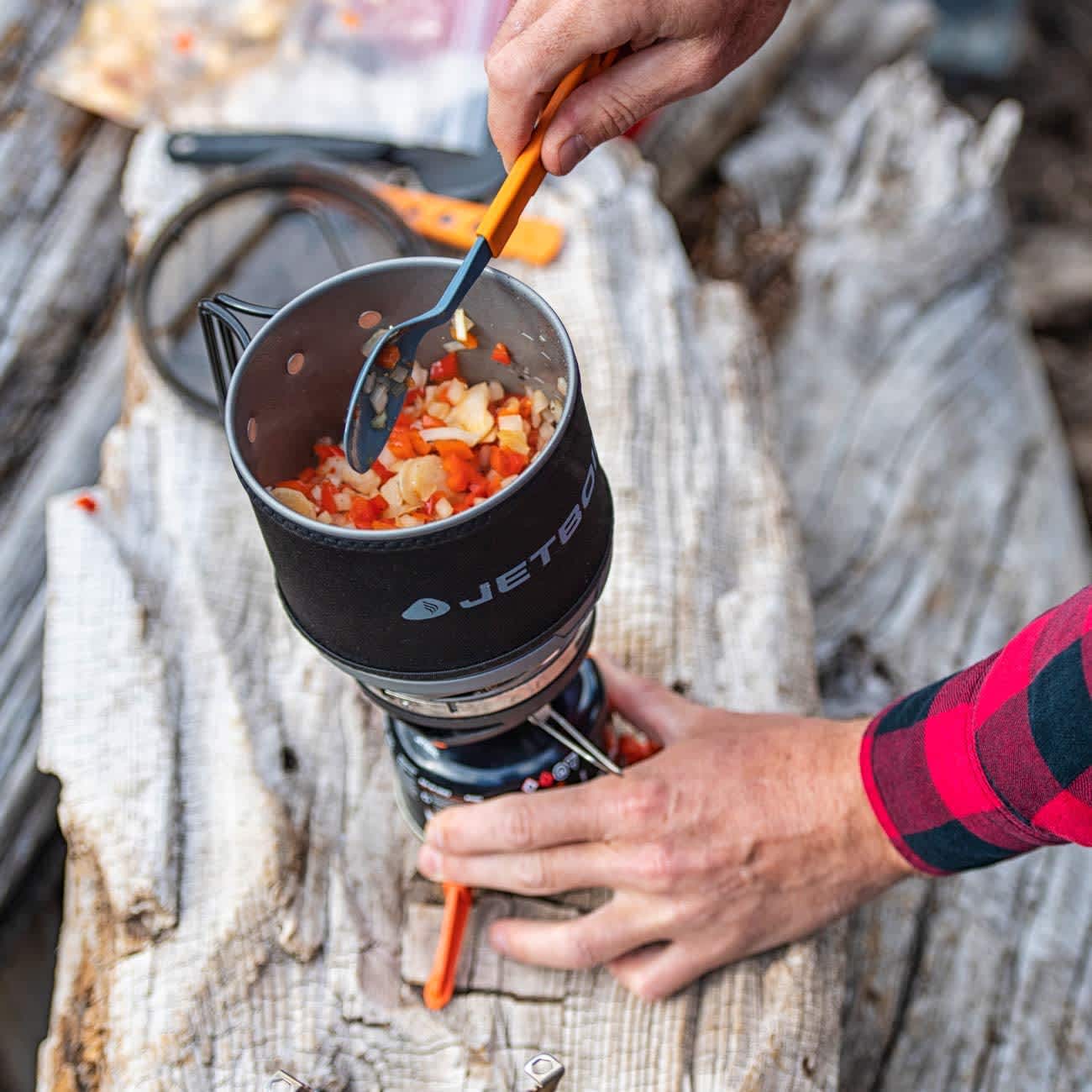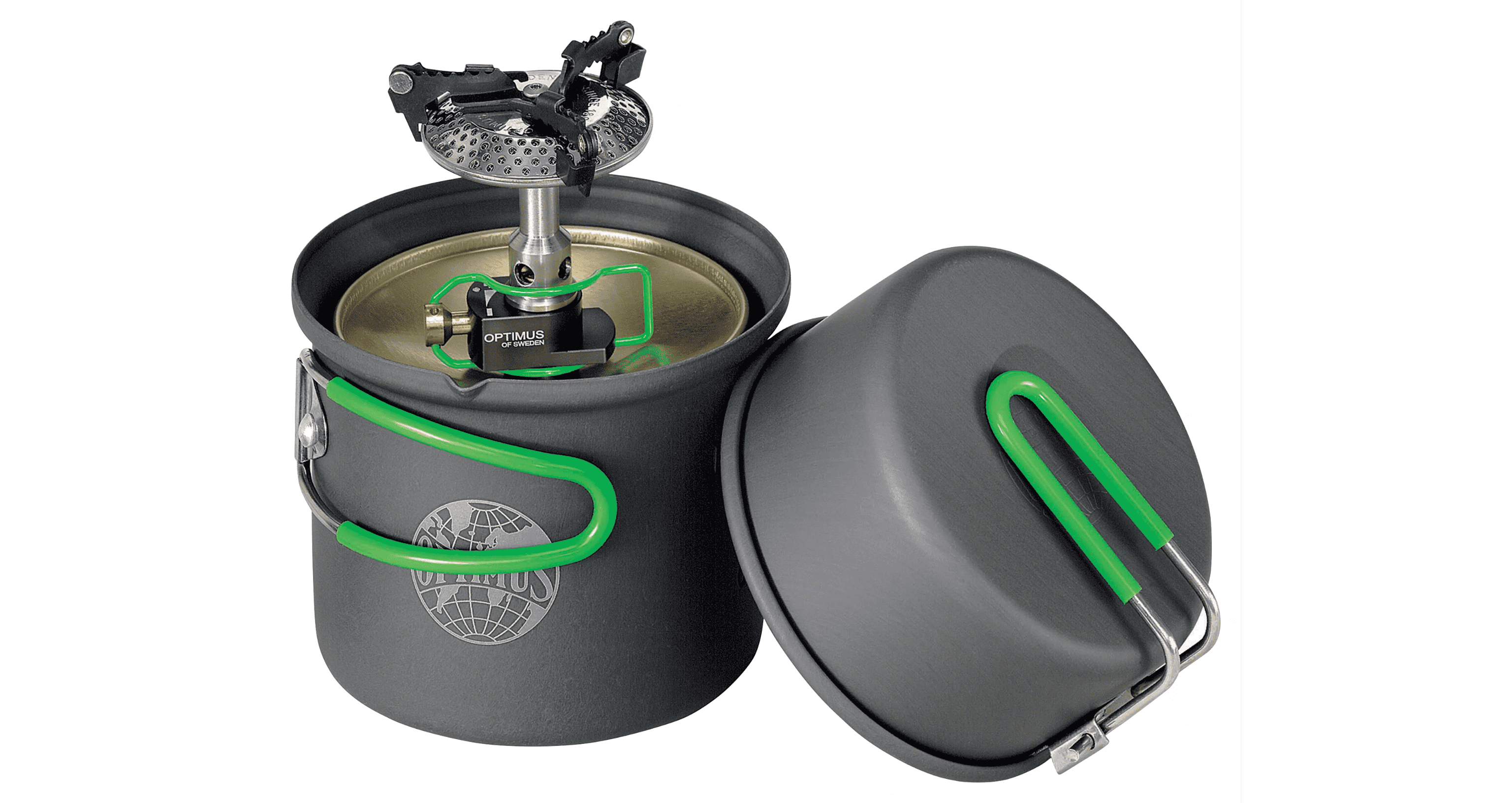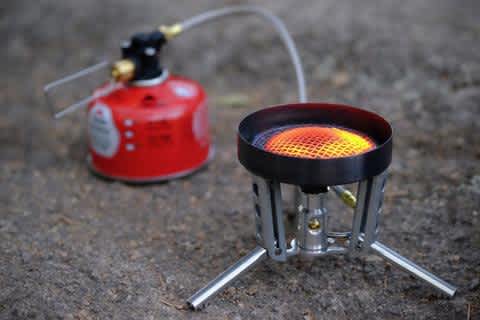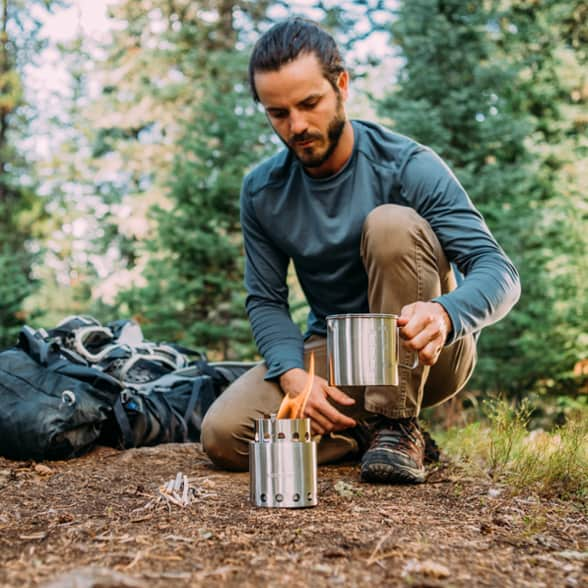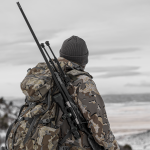Cooking On the Hunt: The Best Backpacking Stoves
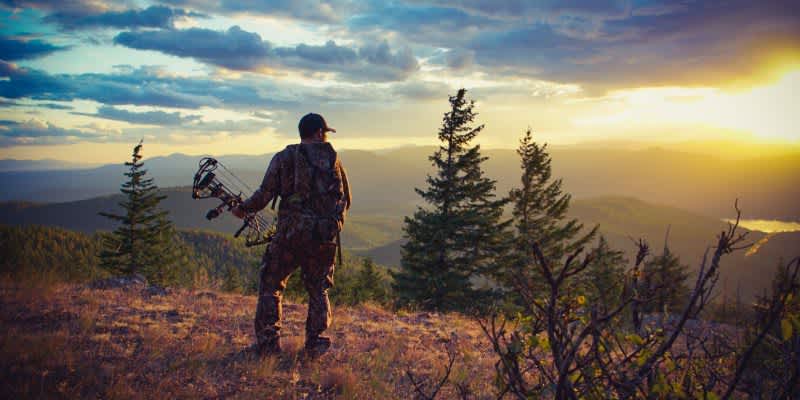
1. Snow Peak - LiteMax Titanium Stove, GST-120R
If you’re a backpacking minimalist then this is the best option out there bar none. The Snow Peak LiteMax Titanium stove can be powered by any quality Isobutane-propane fuel which is very efficient and also ensures you’re getting the best price on your fuel before you head out. The stove only weighs 1.9 ounces without the fuel canister attached and packs down into a 3x5x5-inch package meaning it takes up very little space in your backpack.
2. Jetboil MiniMo
A turnkey solution for making quick meals or a nice hot cup of coffee in the morning before you start your hunt, the Jetboil MiniMo is a convenient solution that uses either an Isobutane or propane canister and features a nice tripod stand for stabilization on slightly uneven surfaces. What’s cool about almost all of the Jetboil lineup is that they all come with a perfectly sized pot that can fit soup, or a hot drink (some are larger than others). The JetBoil MiniMo is 14-ounces with both the pot and burner and also features a very finely tuned burner control ignited with a pushbutton igniter.
3. Optimus Crux Lite
Another all-in-one solution I really like is the Optimus Crux Lite cooking system. This simple compact system packs up nicely into a one-piece container that protects the more sensitive parts of the stove with the more durable two-piece cooking pots. The stove can burn butane, propane, and isobutane and you can get about 90-minutes worth of cooking time out of the system before a refill (using a standard size 230 g gas canister). The cookware is just as convenient and features a nice pouring lip and internal measuring marks for making gourmet meals out in the field. The whole package wraps up in a nice nylon storage bag for keeping everything together.
4. MSR WindBurner
This award-winning backpacking stove is great for those windswept snowy or arid plains where getting a solid flame going is difficult (even for a Jetboil). Similar to the Jetboil system, the MSR WindBurner features an all-in-one system that comes with a burner and a pot but where the Jetboil delivers peak heat performance, the MSR WindBurner has phenomenal wind resistance while still giving you a great boil time on that morning coffee. The MSR WindBurner is priced on the higher end of these backpacking stoves and also runs off of Isobutane/propane and weighs in at 15.5 ounces.
5. Solo Stove Lite
Breaking from the propane/butane/isobutane powered stoves on this list we finally have my favorite – the Solo Stove Lite. This compact little stove uses natural fuel you find in the wild (or bring along with you) and is sized right in between the largest and smallest burners on this list (weighs 9-ounces). The stove is designed in such a way that it brings in cold air from the bottom of the stove and converts that cold air into preheated air which then is recycled to the secondary burn chamber to provide you with a nice intense heat good enough for boiling and cooking. If you’re looking for something simple that doesn’t require you to carry fuel around with you then the Solo Stove Lite is the perfect and more natural option for the backcountry hiker.
6. Jetboil Sumo
Sharing the same great characteristics that make the compact Jetboil MiniMo great is the larger Jetboil Sumo. The Jetboil Sumo features a large FluxRing 1.8L cooking pot which greatly expands your meal cooking options. The entire rig is still less than 2lbs, even with the larger cooking cup and the cup also comes with a nice insulating cozy for better heat retention in the cold. This is a great opinion that is still priced around the same as the MiniMo but gives you the ability to cook for multiple people quickly.
How to pick the right backpacking stove
Whether you’re headed deep in country on a hunting trip, or hiking way back into the backcountry to get away from it all, a backpacking stove is a necessity that you’ll want to have with you. How do you pick the right one for you? Here are a few things to look at.
- Fuel type – backpacking stoves can run on bottled gases, refillable liquid fuel types or alternative fuels like pellets or wood. Each fuel type has pros and cons
- Size – You need to be aware of the size of the stove and match it to how big you need. If you’re using it for more than just yourself, for example
- Packability – Beyond the size, you have to make sure it packs down and can fit in the amount of space you have available
This is one of those areas where you need to really sit down and plan out how you’re going to do things and how you are going to pack for your adventure. If you’re anything like us, you can make anything work, but having one less headache while you’re in the backcountry can really be a good thing.
Why not just start a campfire instead of carrying around a stove?
Campfires are a great way to stay warm and cook when out camping or backpacking but unfortuneately you can’t always guarantee a good source of wood for burning. If you happen to be backcountry hunting when it’s a snowy or rainy season then you might find yourself without a source of heat to cook with and that could lead to an absolutely miserable hunting trip. Portable camp stoves guarantee that you’ll have access to hot meals and drinks while you’re out in the wilderness.
What fuel type is best for gas camp stoves?
Every fuel (including wood) has its advantages when on a backcountry hunting trip. While wood can be sourced in situ, propane, butane, and isobutane can all be carried without much fuss. Propane generally provides better efficiency while butane and isobutane are lighter and better suited for backpacking situations.
Can my backpacking stove provide me with tent heat?
Sadly no, Backpacking stoves aren’t really a good fit for heating up your tent in frigid conditions as they don’t put out a lot of heat that is useful for anything other than cooking. On top of that, there is also a chance that your stove could suffocate you as they can put off a lot of carbon monoxide. There are tons of more suitable portable camping tent stoves that you can use safely and are more efficient for that specific task.
We are committed to finding, researching, and recommending the best products. We earn commissions from purchases you make using the retail links in our product reviews. Learn more about how this works.

